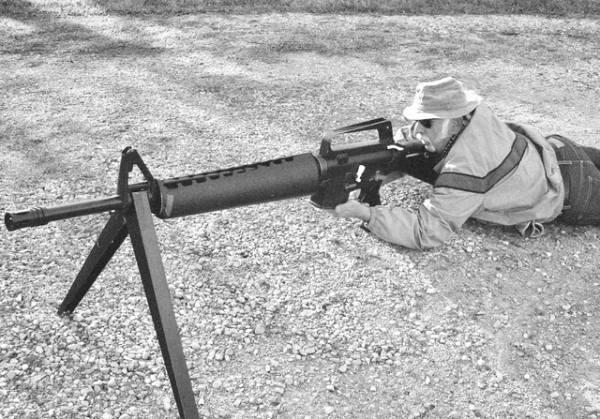
Your first consideration when pondering whether or not to buy a new piece of kit – holster or optics, maybe a new firearm – should be “application.” What need are you expecting this gear to fill? Application dictates what you need.
Not all things firearm related are defensive in nature. There are objects that we acquire just because it fills a desire. And there’s nothing wrong with this. A year ago or so I picked up a Tec-9 and a Tec 22. These firearms have no real application; they are what I call “fun guns.” You plink around on the range, burning up ammo. They’re unique enough that most people haven’t see one so it’s cool to share the experience. And, if you’re my age, recalling the “good old days” when you were twenty-one and doing the same thing with your first Tec-9 because you thought it was a “cool” weapon.
The defensive category – the “life and death” application of a firearm – is completely different. This is a serious subject, and should be approached accordingly. While perfection doesn’t exist, a defensive weapon must fit the application as perfectly as possible. Neither “cool,” or “new” nor “good looking” apply here.
You also have to factor in the end user. A full size, high-capacity double stack semi-auto isn’t going to fit a smaller sized person or be easily concealed by even a larger framed person. Supplying a new shooter with a lightweight revolver in .357 Magnum is a bad idea. The pistol is ideal for the application, but it’s not going to fit the shooter. A small semi-auto pocket pistol, and its miniature thumb safety and reduced size trigger guard may be easy to conceal, but can be too small for a person with XL sized hands.
A large caliber rifle round, say .308 or 7.62 x 39 is a powerful round. These rounds are designed to punch through a lot of material. Unless you live in the boondocks without any neighbors they are probably not what you want for a home defense application. The .223/5.56 is much better. The fast moving, lightweight bullets dissipate their energy quickly, and normally will penetrate less sheetrock and 2 x 4’s than handgun rounds.
Optics is one area I see a lot of people leave the path of application, especially when it comes to magnification. For defensive use you don’t need or want magnification – defensive use of the rifle is done at handgun distances. At these ranges the amplified view through the scope is going to restrict your field of view. Red dot optics are outstanding for this application.
Even most law enforcement use of precision rifles is done at fairly close distances – from one side of the street to another or a little farther. Yes, some magnification is good for purposes of ID’ing the threat or gathering intel. But, you’re not going to need or want to use a scope with an extremely high magnification even at low power. For this application I’m a big fan of the adjustable 1.5-4 or 6 power scopes with a red-dot built in. At close distance you can use it on 1.5x with the red-dot, and then dial it up if needed.
Application, it’s first on the list when considering a new piece of gear. What need are you trying to fill? Once you’ve determined this you can start researching to discover what best fits you.
Tiger McKee is director of Shootrite Firearms Academy, which is celebrating its twenty-fifth anniversary. He is the author of The Book of Two Guns, AR-15 Skills and Drills, has a regular column in American Handgunner and makes some cool knives and custom revolvers. Visit Shootrite’s Facebook page for other details.